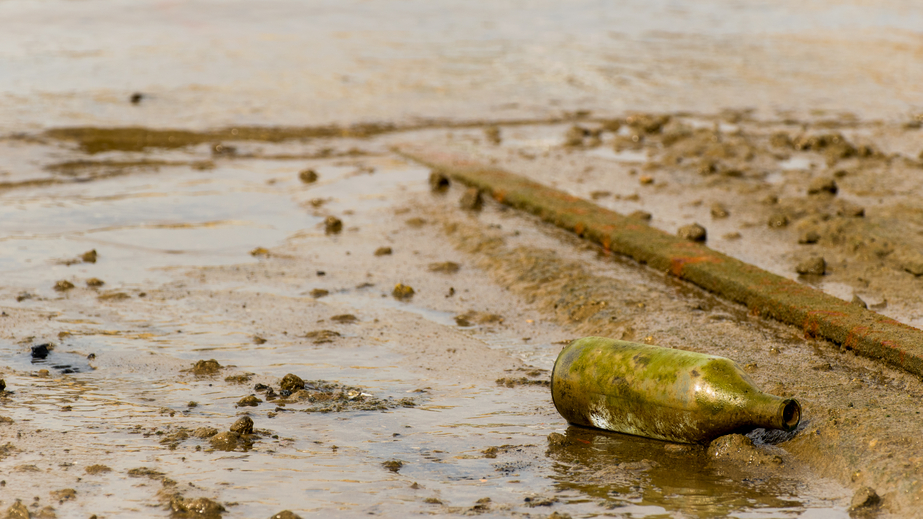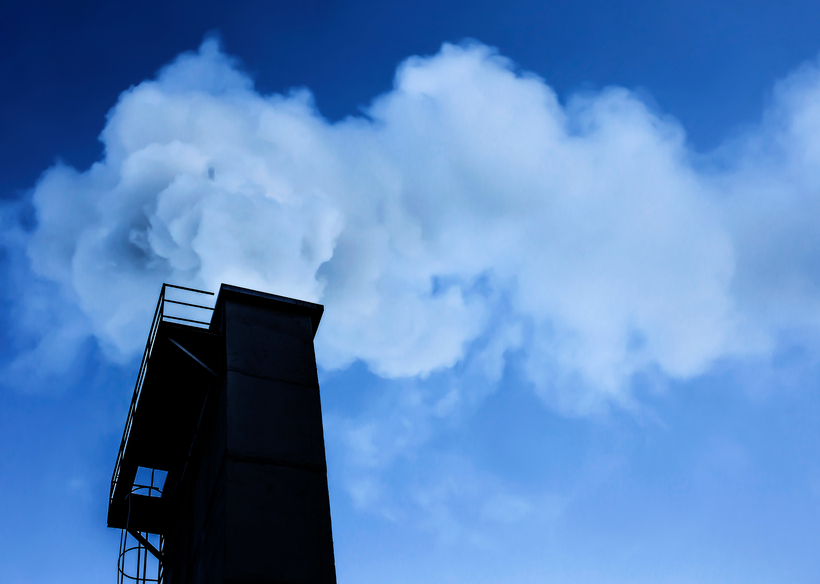Oregon Environmental 30 PDH Discount Package 3
Courses in this Package
Brownfields Road Map to Understanding Options for Site Investigation and Cleanup (C06-019)
Climate Smart Brownfields Manual (C05-028)
Environmental Quality and Border Security: A 10-Year Retrospective (C04-060)
Area Contingency Planning (C03-067)
Control and Containment Technologies for Hazardous and Toxic Waste (C10-002)
Building Air Quality: Basics (C02-036)

This online engineering PDH course provides a general description of the steps in the investigation and cleanup of brownfields sites, and introduces Brownfields stakeholders to the range of technologies and resources available to them. The Road Map provides valuable information for stakeholders typically involved in or affected by redevelopment of Brownfields sites, whether through public projects, private development or public-private partnerships.
Brownfields sites are defined as “real property, the expansion, redevelopment or reuse of which may be complicated by the presence or potential presence of a hazardous substance, pollutant or contaminant” (Comprehensive Environmental Response, Compensation, and Liability Act of 1980, as amended by the Small Business Liability Relief and Brownfields Revitalization Act of 2002, §101(39)). The cleanup of Brownfields sites improves and protects the environment and may result in many benefits for the local community.
Revitalizing Brownfields sites has the potential to create benefits throughout the community, including community involvement in the project, job creation, and an increase in residential property values once a nearby Brownfields site is assessed or cleaned up.
This 6 PDH online course is intended for environmental, civil, and sustainability engineers as well as others seeking an outline on dealing with Brownfields in the United States and familiarizing with the EPA Brownfields Program.
This PE continuing education course is intended to provide you with the following specific knowledge and skills:
- Learning about the Brownfields road map
- Familiarizing with the factors and considerations that affect cleanup at a Brownfields site
- Learning about the Site Assessment phase
- Learning about the Site Investigation phase
- Familiarizing with the phase relating to assessment and selection of cleanup options as well as designing and implementing the cleanup
- Exploring various spotlights such as technologies, best practices, institutional controls
Upon successful completion of the quiz, print your Certificate of Completion instantly. (Note: if you are paying by check or money order, you will be able to print it after we receive your payment.) For your convenience, we will also email it to you. Please note that you can log in to your account at any time to access and print your Certificate of Completion.

This online engineering PDH course provides tools and strategies that can be implemented during the brownfield cleanup and redevelopment process. This includes consideration of projected climate change and potential impact on vulnerable populations when performing brownfield site assessments, evaluating cleanup alternatives, and planning for redevelopment.
Many members of vulnerable populations, including children, the elderly, low-income communities and tribal communities, live close to brownfields and other blighted properties. Brownfield redevelopment presents opportunities to reduce blight and improve the quality of life for vulnerable populations while mitigating the impacts of climate change.
To build resilience to climate change, members of the community (including local government, businesses, academic institutions, banks, community leaders, and residents) must pursue climate change adaptation as well as mitigation.
This 5 PDH online course is intended for environmental and sustainability engineers, as well as others interested in learning more about the tools, strategies, and considerations of brownfield cleanup and redevelopment.
This PE continuing education course is intended to provide you with the following specific knowledge and skills:
- Learning about the basic concepts of brownfield revitalization
- Understanding the importance of mitigation and adaptation for brownfield communities
- Understanding how to reduce climate impacts through greener demolition
- Learning about the importance of green remediation
- Familiarizing with brownfield redevelopment techniques
Upon successful completion of the quiz, print your Certificate of Completion instantly. (Note: if you are paying by check or money order, you will be able to print it after we receive your payment.) For your convenience, we will also email it to you. Please note that you can log in to your account at any time to access and print your Certificate of Completion.

This online engineering PDH course provides basic information on environmental quality and protection in the context of existing and proposed border security infrastructure and measures.
Border security is an important national priority, and environmental protection in the border region is of critical importance, given the rich natural resource endowments of the region. The shape and form of security infrastructure installed along the border is a critical factor affecting these areas of special concern. Additional installation of security infrastructure along the border will have a large impact on the region, presenting both challenges and opportunities to enhance security while preserving or even improving environmental sustainability.
There are mainly five key overlapping challenges in which environmental protection intersects with border security. These include, tourism and recreation economy; habitat integrity and wildlife corridors; water management; flooding, trash and sediment control; Hazmat and emergency response; and air quality.
This 4 PDH online course is applicable to environmental engineers who are interested in learning more about improving border security infrastructure while preserving environmental sustainability in the region.
This PE continuing education course is intended to provide you with the following specific knowledge and skills:
- Familiarizing with the overlapping challenges between border security and environmental protection
- Gaining a general overview on the demographic and economic context in the border region
- Understanding the environmental protection and border security context
- Learning about the challenges and opportunities presented in the region
- Understanding the emergency response management and agreements at the federal, state and local levels
- Exploring several case studies in different areas along the border region
Upon successful completion of the quiz, print your Certificate of Completion instantly. (Note: if you are paying by check or money order, you will be able to print it after we receive your payment.) For your convenience, we will also email it to you. Please note that you can log in to your account at any time to access and print your Certificate of Completion.

This online engineering PDH course provides information on the development of Area Contingency Plans (ACPs) for environmental emergencies, and explains the formation of area committees, essential plan elements and the establishment of the ACP scope and content.
An ACP is a reference document prepared for the use of all agencies engaged in responding to environmental emergencies in a defined geographic area. An ACP is not a rigid, prescriptive plan with step-by-step instructions for responses. Rather it serves as a mechanism to ensure responders have access to essential area-specific information, as well as to promote interagency coordination as a means of improving the effectiveness of responses.
Responding to the immediate circumstances of an environmental emergency can be a challenging task. Thus, the ACP provides a mechanism for planning for these potential complications prior to an incident. Moreover, it is a useful tool for responders, providing practical and accessible information about what they need to know for an effective response. Currently, the ACP concept has grown beyond oil spill legislations to encompass the prospect of responses to environmental emergencies in general, including hazardous substance releases, natural disasters and acts of terrorism.
This 3 PDH online course is applicable to environmental engineers who are interested in developing Area Contingency Plans (ACPs) for environmental emergencies.
This PE continuing education course is intended to provide you with the following specific knowledge and skills:
- Familiarizing with the concept of Area Contingency Planning
- Understanding the requirements and initial steps of conducting a preliminary analysis
- Learning about area committees, their activities and responsibilities
- Understanding the scope and content of the ACP
- Gaining a general overview of the advanced area planning using different platforms
- Exploring the essential plan elements
Upon successful completion of the quiz, print your Certificate of Completion instantly. (Note: if you are paying by check or money order, you will be able to print it after we receive your payment.) For your convenience, we will also email it to you. Please note that you can log in to your account at any time to access and print your Certificate of Completion.

This online engineering PDH course provides guidance on the design of site specific remedial technologies at uncontrolled hazardous waste sites. These remedial technologies typically include containment, treatment, disposal systems.
Control and containment technologies are those remedial systems that are used primarily for management of contaminants onsite to prevent excursions to the air or ground water. Control and containment remedial techniques are usually undertaken where the volume of waste or hazard associated with the waste makes it impractical or impossible to dispose of the contamination offsite or to treat the waste or contaminated material onsite. Site control and containment remedial techniques are often implemented along with treatment systems to minimize the volume of material requiring treatment.
This 10 PDH online course is applicable to civil, environmental and geotechnical engineers, as well as design and construction personnel involved with hazardous and toxic waste remedial activities.
This PE continuing education course is intended to provide you with the following specific knowledge and skills:
- Waste collection and removal
- Contaminated groundwater plume management
- Surface water controls
- Gas control
In this professional engineering CEU course, you need to review Chapter 3 of the US Corps of Engineers Publication EM 1110-1-502, "Control and Containment Technologies".
Upon successful completion of the quiz, print your Certificate of Completion instantly. (Note: if you are paying by check or money order, you will be able to print it after we receive your payment.) For your convenience, we will also email it to you. Please note that you can log in to your account at any time to access and print your Certificate of Completion.

This online engineering PDH course presents the factors affecting Indoor Air Quality (IAQ): sources of indoor air contaminates, HVAC systems design and operation, pollutant pathways and driving forces, and building occupants. Moreover, this course illustrates how "effective communication" between building management and building occupants is very essential in preventing IAQ problems.
The indoor environment in any building is a result of the interaction between the site, climate, building system (original design and later modifications in the structure and mechanical systems), construction techniques, contaminant sources (building materials and furnishings, moisture, processes and activities within the building, and outdoor sources), and building occupants. Indoor air contaminants can originate within the building or be drawn in from outdoors. If contaminant sources are not controlled, Indoor Air Quality (IAQ) problems can arise, even if the HVAC system is properly designed and well-maintained.
EPA recognizes that IAQ problems present serious hazards to building occupants. Therefore, EPA developed this guide to protect building owners and building occupants from poor indoor air quality and to promote a healthy indoor environment in which the surroundings contribute to productivity comfort and a sense of health and well being.
This 2 PDH online course is applicable to civil, environmental and mechanical engineers, facility managers, building owners and all others who are interested in gaining an understanding of building air quality.
This PE continuing education course is intended to provide you with the following specific knowledge and skills:
- Identifying the elements required in the development of an indoor air quality program
- Understanding how temperature and humidity affect indoor contaminant levels
- Learning about the techniques to control odors and contaminates
- Learning about the symptoms attributed to IAQ problems and their effect on human health
- Establishing a communication system between building management and occupants that can help prevent IAQ problems
In this professional engineering CEU course, you need to review Tab I "Basics" of the EPA's, "Building Air Quality" publication (A Guide for Building Owners and Facility Managers).
Upon successful completion of the quiz, print your Certificate of Completion instantly. (Note: if you are paying by check or money order, you will be able to print it after we receive your payment.) For your convenience, we will also email it to you. Please note that you can log in to your account at any time to access and print your Certificate of Completion.